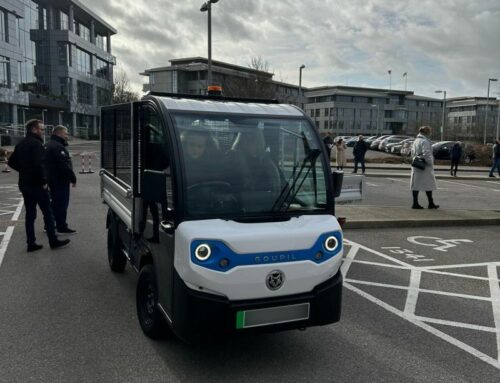A “kickstart” is required from government to encourage faster electric van adoption by businesses, says the Association of Fleet Professionals.
Paul Hollick, chair at the industry body, said that its members were reporting a range of issues with the introduction of electric vans and some form of financial incentive was needed that would help to overcome these objections, playing a similar role to the boost provided by low benefit-in-kind taxation for electric cars.
“Our feeling is that there is an assumption at government level that electric vans will follow roughly the same pattern as electric cars in terms of speed of adoption but given feedback from across our membership, we are highly doubtful that will prove correct.
“We now have several major fleets running a relatively large number of electric vans and almost all are finding a range of problems that are not easily solved and which are proving to disincentivise both operators and drivers. Many of these early adopter organisations have a corporate commitment to net zero and will effectively choose electric vans whatever the operational compromises encountered. However, others are proving less likely to be quite so determined with some having suspended electric van acquisition. That is why some form of incentive needs to be introduced simply to make tackling these problems worthwhile.”
Hollick said that the issues encountered could be divided into operator and driver problems. “Operators are reporting that charging infrastructure is often unsuitable for vans, AER rates that do not provide suitable levels of reimbursement, ongoing poor supply of vehicles, limited choice of model types, rising lease and purchase prices and, of course, dramatically increased charging costs.
“In some cases, fleets are reporting that electric van running costs are now higher than diesel. Many are also finding it difficult to install home chargers on a widespread basis for their drivers and are having to build charging into the working day, which causes obvious disruption.
“Additionally, van drivers are generally proving much more resistant to electrification than their car counterparts. Even if they are one of the 30% who are able to have a home charger, a significant proportion don’t want their work van parked on their drive overnight while it is plugged in. This means they are having to use public charging, which can create problems over fair AER reimbursement. It is certainly not unknown for drivers to attempt to hand back their electric van to their employer and demand a return to their diesel.
“All of these problems need to be taken into account before you even start looking at the core issues of range and payload. While newer designs coming to market are starting to overcome these objections to a greater or lesser extent, they remain fundamental issues for many operators who are considering electric van adoption.”
Hollick said that without widespread fleet first user adoption, there would be limited future supply of electric vans into the used sector.
“Unless businesses very quickly begin to operate electric vans on a large scale, there will be no real used electrified light commercial vehicle market of which to speak by 2030, which will affect everything from long-term national targets for net zero to localised plans for increasingly strict clean air zones in cities.
“Our view is very much that the government needs to take some control of the situation and find a way to kickstart electric van adoption that will provide an incentive large enough to overcome this range of issues and bring about a sea change in what looks like an increasingly tepid market. There is a very real chance that only van fleets with a corporate commitment to net zero will become 100% electric this decade and an equally real possibility that many others will drag their heels and instead operate diesel for as long as possible.”







Leave A Comment